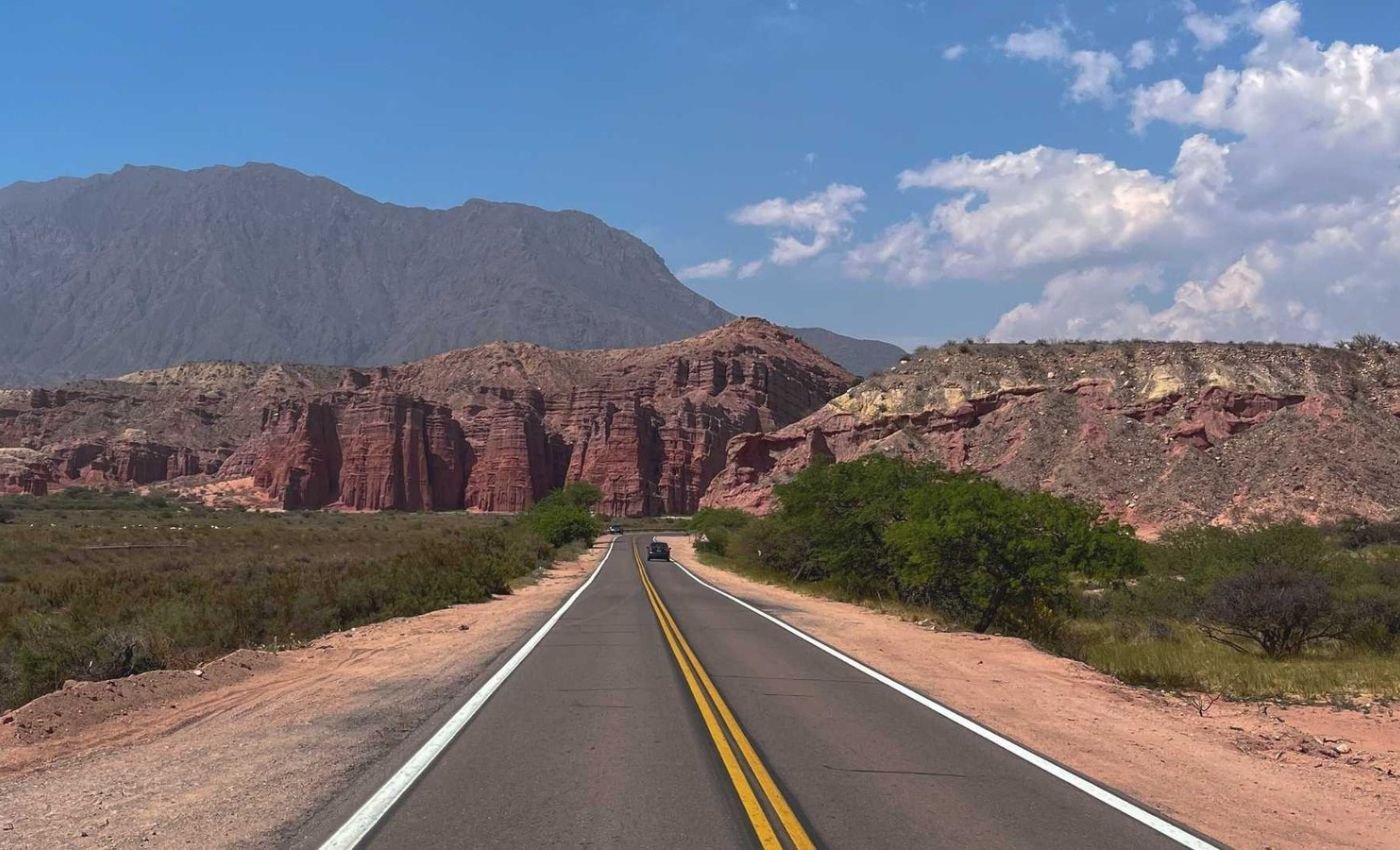
Salta & Jujuy: A Complete Travel Guide to Argentina’s Northwest
Discover Salta & Jujuy with this ultimate guide to Argentina’s Northwest gems, featuring practical tips and must-see attractions.
When people think of Argentina, their minds often drift to the thunderous cascades of Iguazú Falls, Patagonia’s rugged wilderness, or the tango-filled streets of Buenos Aires. But tucked away in the country’s northwest lies a hidden gem that should top every traveller’s bucket list: Salta & Jujuy. This region has it all: rolling vineyards, vibrant multicoloured mountains, and fascinating Incan and colonial history. It’s also home to mouthwatering regional cuisine and cultural experiences unlike anywhere else in Argentina. Oh, and did I mention it’s one of the most affordable regions in Argentina to explore?
If you’re dreaming of an unforgettable adventure to Salta & Jujuy, you’re in the right place. This post will guide you through everything you need to know, from must-see attractions to tips that will make your journey extraordinary.
This post contains affiliate links. If you make a purchase through these, I may earn a small commission at no extra cost to you, which helps me keep this blog running. Thanks for your support 🙂
Table of Contents
ToggleWhy Visit North West Argentina?
North West Argentina is a sensory adventure like no other. Here’s what awaits you:
- Rich History and Culture: Wander through colonial towns, explore ancient ruins, and immerse yourself in the region’s vibrant traditions.
- Stunning Landscapes: From vast salt flats and towering mountains to lush valleys brimming with vineyards, the scenery is nothing short of spectacular.
- Delicious Food and Drink: Savour local delights like empanadas salteñas, hearty locro, and humita. This region is also home to some of Argentina’s most renowned vineyards, and beer enthusiasts won’t want to miss the famous Salta stout!
Geography of North West Argentina
When exploring the captivating North West of Argentina, our journey focuses on Salta Province, its charming capital city (Salta city) and the stunning landscapes and mountain villages of Jujuy Province. I recommend skipping San Salvador de Jujuy, Jujuy’s capital, in favour of the region’s true gems, as there is not much to do and see there.
Best of all, the region’s laid-back charm makes it perfect for slow, immersive travel. However, if time is limited, there are also excellent day tours from Salta that condense many of the key highlights, allowing you to experience the best of this region in a shorter time.
Salta City: A Colonial Jewel
Start your adventure in Salta City, where colonial charm meets a rich cultural tapestry. Highlights include:
Museo de Arqueología de Alta Montaña (MAAM):
Discover the fascinating Incan heritage at Salta’s Museo de Arqueología de Alta Montaña, home to the world-famous frozen mummies from Llullaillaco Volcano. This must-visit museum offers a deep dive into Inca culture with a stunning collection of artifacts and mummies, preserved in incredible condition. The mummies of three Inca children, sacrificed over 500 years ago, are one of the most significant archaeological finds in recent history. The museum is open Tuesday to Sunday, 11 am to 7 pm.
Colonial Architecture in Salta: A Glimpse Into the Past:
Salta’s colonial architecture is a captivating blend of Spanish influence and local craftsmanship, offering a unique window into Argentina’s rich history. As you explore the city’s charming streets, be sure to visit these three iconic landmarks:
– Cathedral of Salta: Dominating Plaza 9 de Julio, this stunning pink cathedral was built in the mid-1800s after an earthquake destroyed the original structure. A fine example of neocolonial architecture, it features ornate altars, beautiful frescoes, and the tomb of local hero General Martín Miguel de Güemes.
– Basilica Menor San Francisco: One of Salta’s most photographed buildings, this Italian Baroque masterpiece stands out with its striking red-and-gold façade, which gleams at sunset. The adjacent 54-meter bell tower is the tallest in South America. Step inside to admire the peaceful interior and vibrant stained-glass windows.
– Cabildo: Unlike its counterpart in Buenos Aires, the Cabildo of Salta has maintained its original size. One of Argentina’s best-preserved colonial buildings, it now hosts two museums: Museo Histórico del Norte (Historical Museum of the North) and the Colonial and Fine Arts Museum. The balcony offers panoramic views of Plaza 9 de Julio. Fun fact: The Cabildo was a key meeting point for revolutionary leaders during Argentina’s independence struggle.
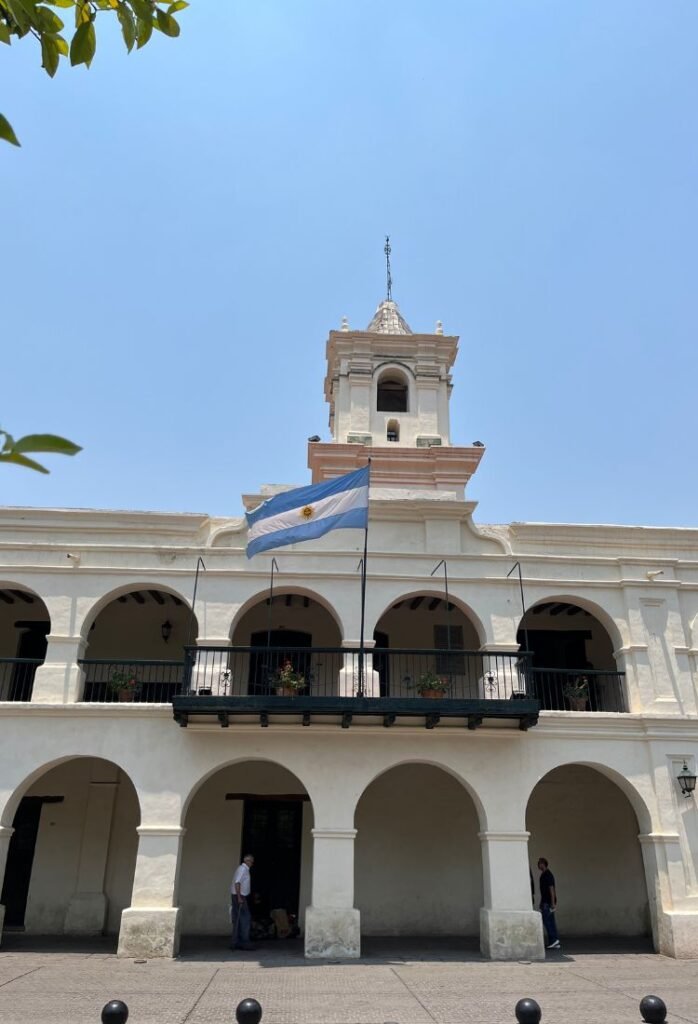
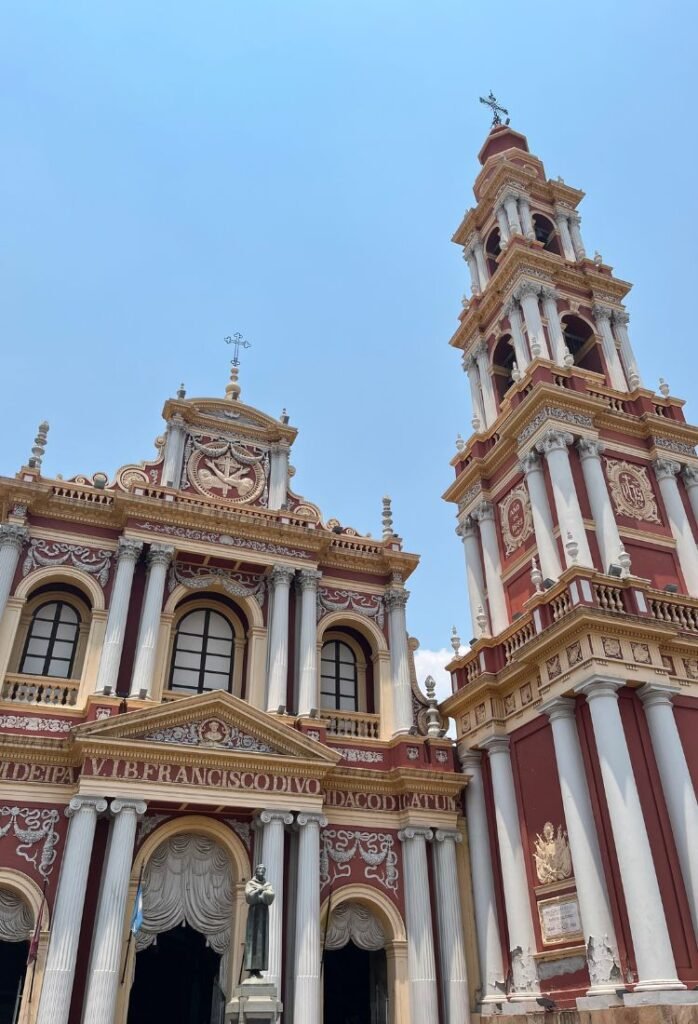
Some of Salta’s iconic buildings
Peñas Folklóricas:
A great way to immerse yourself in local culture through live music, traditional dancing and hearty food is to spend an evening at a local peña. For an authentic experience, I recommend La Casona del Molino, open Tuesday to Sunday from 11 am to 3 pm and 8 pm to 11:30 pm. Be sure to call ahead and book a few days in advance, as it’s incredibly popular. Here, you can savour traditional dishes, Argentine asados (bbq), and excellent wine while enjoying live performances by talented locals. As this spot is a favourite among locals, queues can be long, so aim to arrive at least 30 minutes before opening.
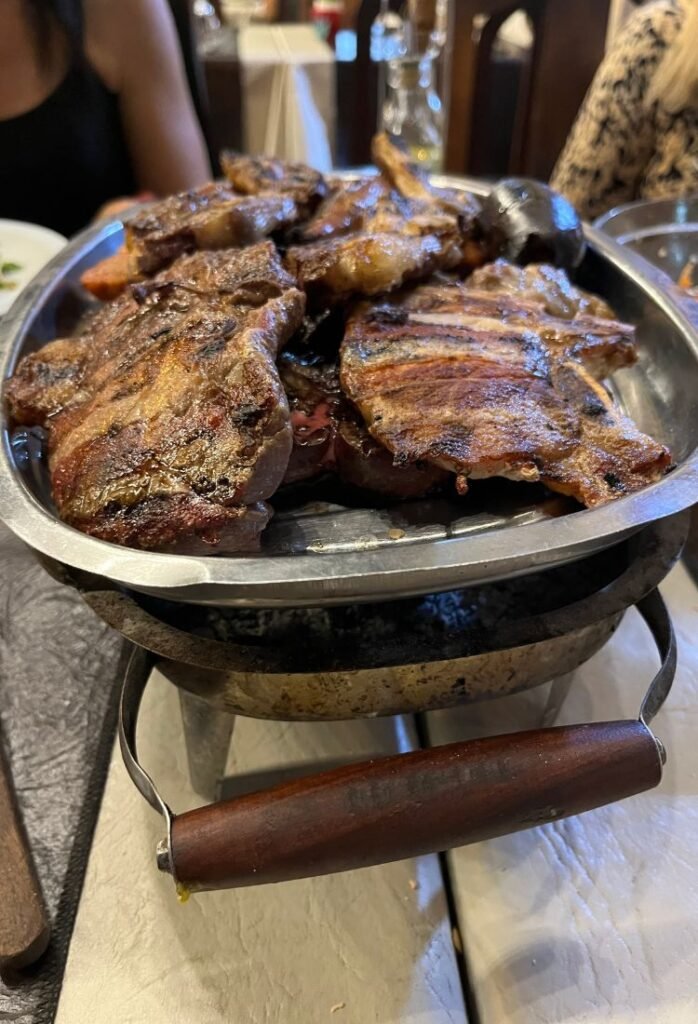
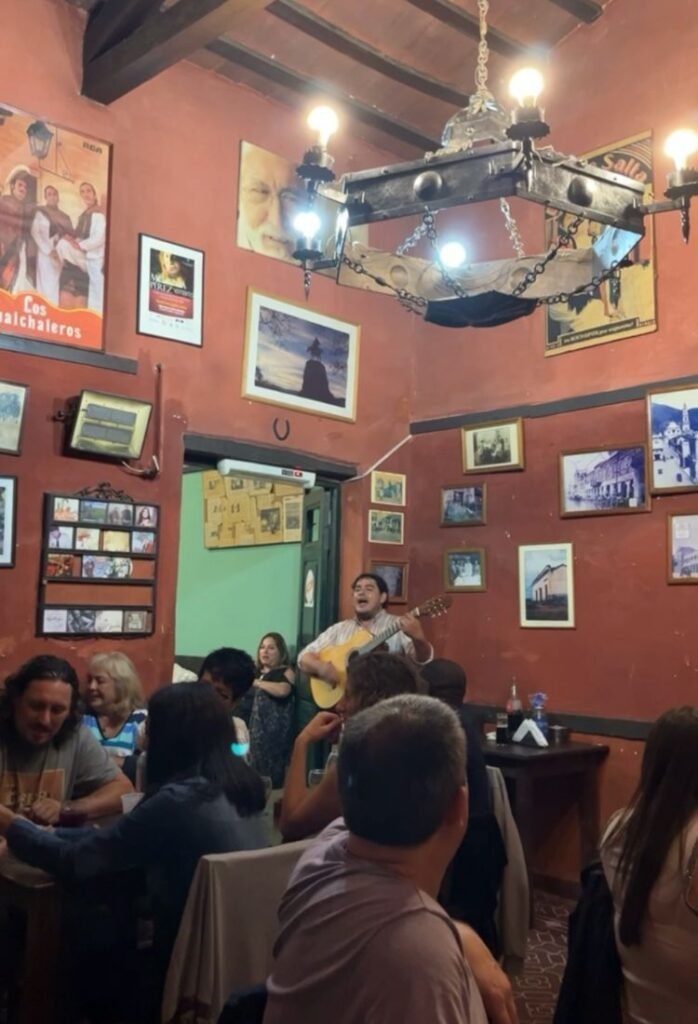
A Taste of Northern Argentina’s Flavours:
No visit to Salta is complete without indulging in the region’s rich and flavourful cuisine. Some of the region classics include empanadas salteñas, humitas, tamales, locro, mondongo, carbonada, and more. There are many restaurants in central Salta city that offer all the iconic dishes.
To truly savour Salta’s culinary delights, I recommend heading to Doña Salta, in Cordoba street, a beloved institution in the city. Their menu offers all the classics dishes. We were pleasantly surpassed by Doña Salta’s atmosphere, its rustic décor, traditional gaucho-style uniforms of the waitstaff, creating a dining experience that feels steeped in tradition. I personally loved the vibe of the place—the food was incredible and prices were very reasonable.
Keep in mind, they don’t take bookings, so walk-ins are the way to go. The restaurant is open from 11:30 am to 3:00 pm and from 8:00 pm to midnight.
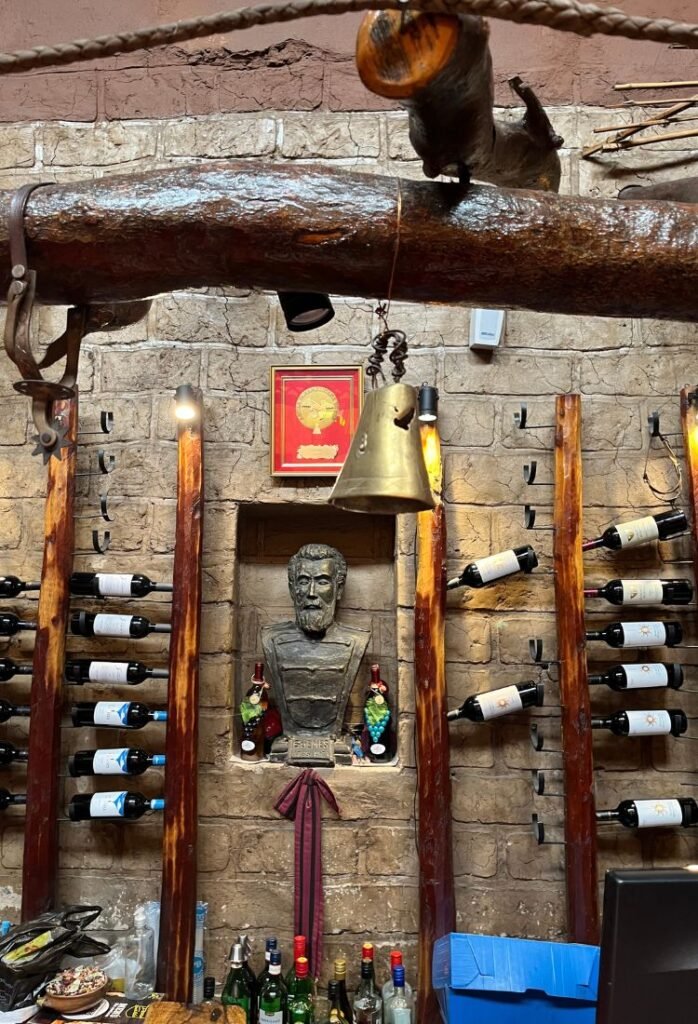
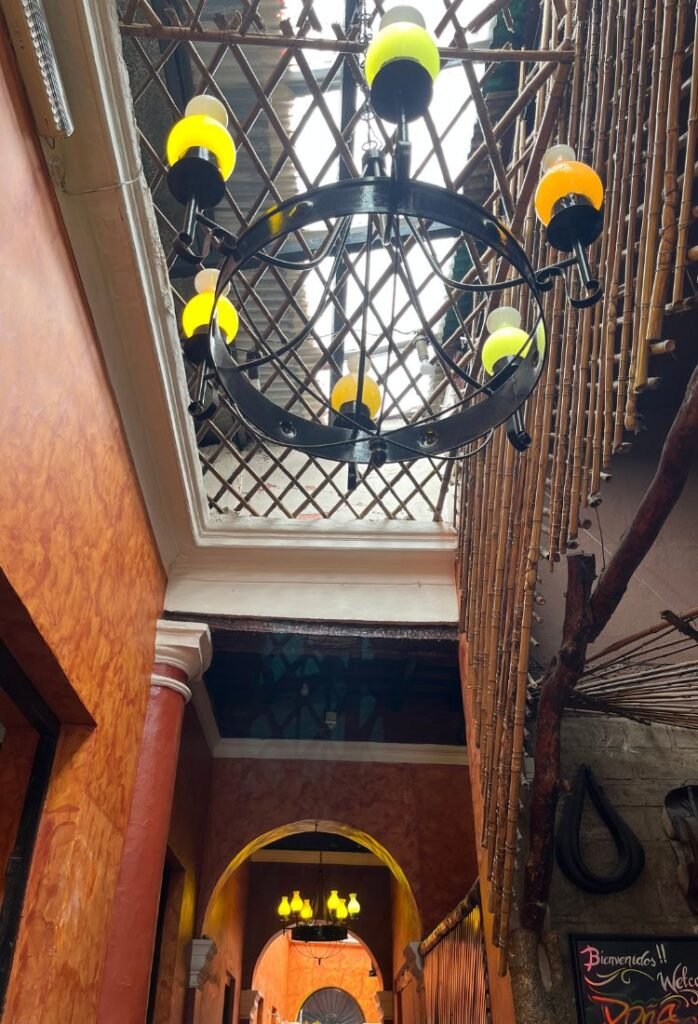
Indulge in the classics of Salta! My top pick: the unbeatable combo of empanadas salteñas and a Salta stout!
Where to Stay in Salta City
Salta City boasts a diverse range of accommodations to suit every traveller, from boutique hotels and countryside estancias to budget-friendly lodges. To immerse yourself in Salta’s colonial charm and vibrant culture, I recommend staying in the historic centre. This area is conveniently close to top restaurants, Plaza 9 de Julio, and departure points for day tours to surrounding regions and Jujuy.
During my stay, I chose Inkai Hotel, and it surpassed my expectations. Conveniently located near bars, restaurants, and at walking distance from Plaza 9 de Julio, the hotel combines modern amenities with thoughtful historical and Incan-inspired touches.
Exploring Salta Province
Beyond Salta City, the province offers a stunning variety of attractions that showcase its breathtaking landscapes, culture and celebrated wine culture. Whether you’re driving through the scenic roads in a rental car or joining a tour from Salta City, every corner of this region offers an unforgettable adventure. From dramatic gorges and picturesque mountain towns to charming wineries nestled among the peaks, Salta’s highlights are sure to captivate your spirit of exploration.
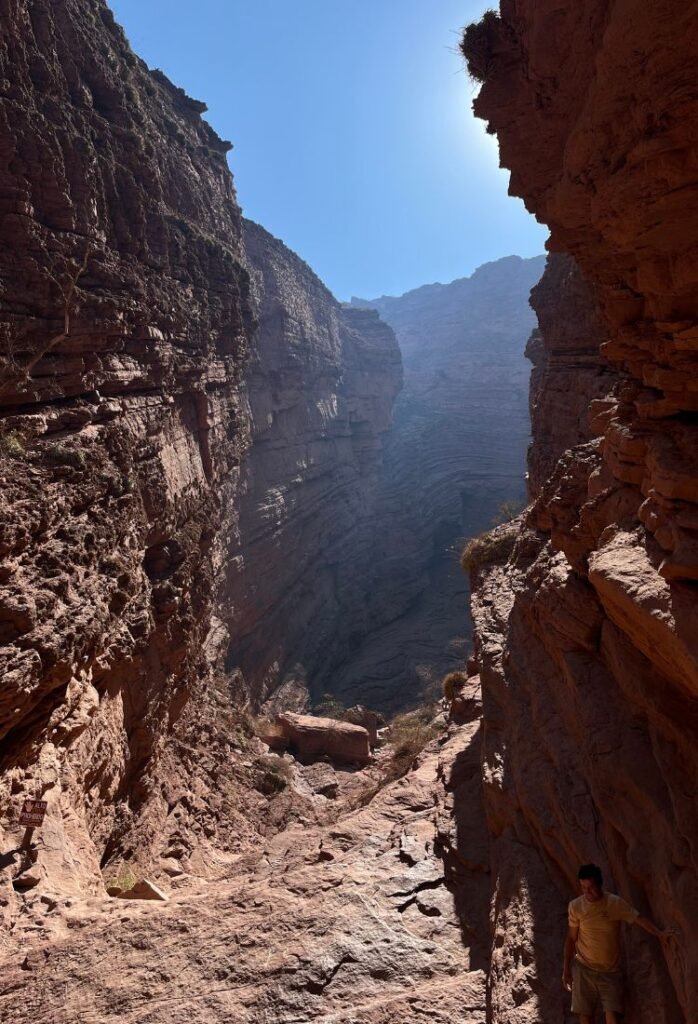
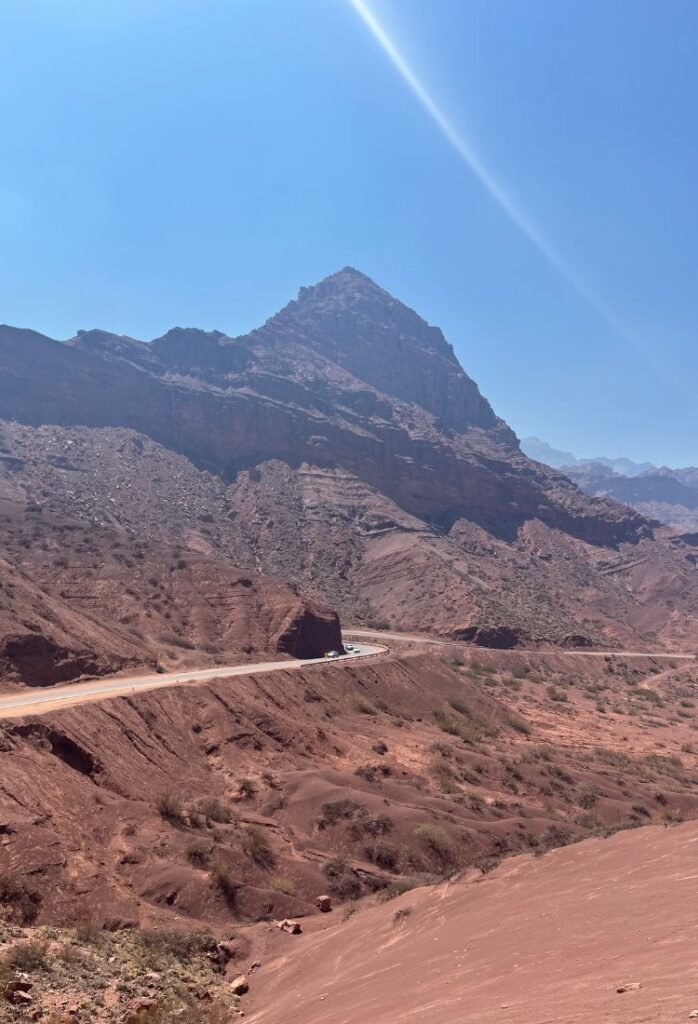
Quebrada de las Conchas:
Heading south from Salta City along Ruta Nacional 68, en route to Cafayate (about a 3-hour drive), you’ll encounter the spectacular Quebrada de las Conchas. This breathtaking natural gorge is renowned for its vibrant red rock formations, dramatic cliffs, and striking geological features. Recognised as a UNESCO World Heritage site, it’s truly a photographer’s paradise. Along the way, there are several stops and lookouts where you can marvel at iconic formations like the Devil’s Throat, the Amphitheatre, the Obelisk, and the Castles (my personal fave!).

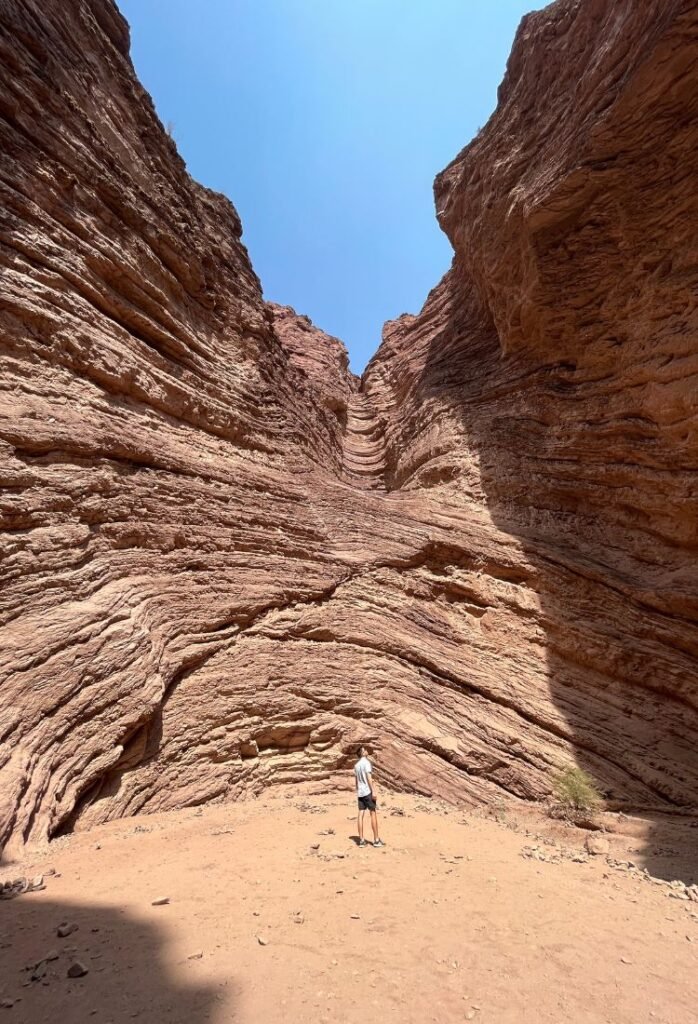
Rock formations in La Quebrada de las Conchas
Cafayate:
Famous for its vineyards, Cafayate is the heart of Argentina’s Torrontés wine production and a must-visit destination in the region. Many day tours departing from Salta City include a stop here, but if you’re driving, make sure to add it to your itinerary. The charming town centre is the perfect spot to refuel, offering a variety of restaurants to suit all tastes. We enjoyed a delicious lunch at Parrilla El Criollo, where traditional dishes are served at great prices in a welcoming atmosphere.
A trip to Cafayate wouldn’t be complete without visiting one of its iconic wineries. Many wineries are surrounded by breathtaking mountain landscape, adding to the experience. Cafayate is not only one of Argentina’s premier wine regions but also among the highest-altitude viticulture areas in the world.
We visited Vasija Secreta, the town’s oldest winery, and had an amazing experience. Their free tours, available daily from 9 AM to 5:30 PM, include tastings of two wines and don’t require prior booking. For a more in-depth experience, they also offer premium tours (for a fee) that feature extended tastings accompanied by a cheese and fruit board.
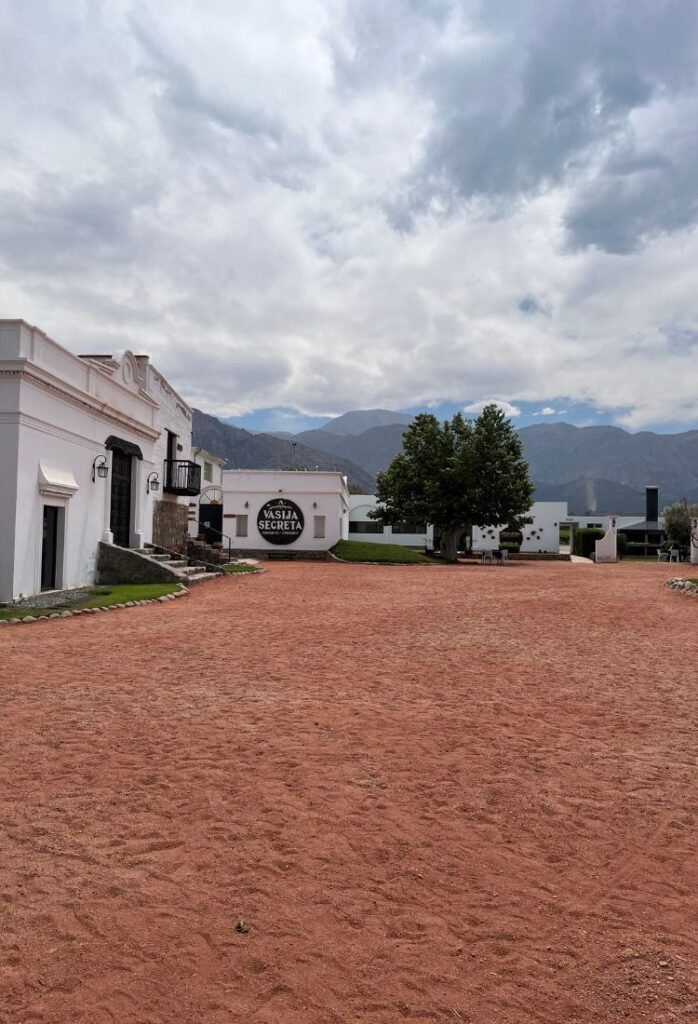

La Vasija Secreta winery, in Cafayate
From here, you can return to Salta City via the same route (RN68), taking the chance to visit any rock formations you may have missed on the way to Cafayate. This is the same route used by most one-day tour operators offering trips to Cafayate and the stunning Quebrada de las Conchas from Salta.
For those driving and seeking a longer adventure, consider spending the night in Cafayate. The following morning, set out early and do a loop back to Salta city via RN40 and RP33 that includes Cachi and Parque Nacional Los Cardones.
Cachi:
Cachi is a hidden gem in Salta Province, offering a perfect mix of charm, history, and breathtaking landscapes. Nestled in the stunning Calchaquí Valleys, inhabited by no more than 2600 permanent residents, this picturesque Andean village captivates visitors with its colonial-style architecture, whitewashed adobe houses, cobblestone streets, and a laid-back atmosphere. It also features several modest restaurants that offer home-cooked traditional foods. There is a church, archeological museum showcasing fascinating artifacts from the region’s indigenous cultures, and beautiful white painted houses.
Note: Travelling from Cafayate to Cachi along Route 40 offers stunning scenery. North of Cafayate, the gravel road is passable with a standard car but easier with a high-clearance vehicle or 4WD. In the rainy season (December–February), flooding is possible, so check the weather and ask locals before heading out.
Ruta 33: The Scenic Journey Back to Salta City:
The drive from Cachi to Salta City via Ruta Provincial 33 is a stunning adventure. The road is paved and well-maintained, making it suitable for any type of car. While Google Maps estimates the trip at just over 3 hours, plan for at least 4.5 hours to fully enjoy the breathtaking stops along the way.
– Recta del Tin Tin: Begin your journey with the perfectly straight, 19-kilometer stretch of road known as the Recta del Tin Tin, an engineering marvel built during the Inca Empire. Flanked by towering cardones (giant cacti), this otherworldly desert landscape invites you to pause for photos and soak in its timeless beauty.
– Parque Nacional Los Cardones: Next, you’ll traverse Parque Nacional Los Cardones, one of Argentina’s 39 national parks, a landscape dominated by vast forests of cacti and dramatic mountain backdrops. Take a moment to stop at one of the viewpoints or explore a short trail to experience the unique desert ecology and sweeping valley views.
– Cuesta del Obispo: As you approach Salta City, you’ll ascend the iconic Cuesta del Obispo (Bishop’s Slope). This winding mountain pass offers jaw-dropping panoramas of the surrounding valleys, with every twist and turn revealing a new vantage point. Stop at the Piedra del Molino, the highest point of the pass (3,457 meters), for one last awe-inspiring photo before descending into the lush Lerma Valley.
Jujuy: Argentina's Northernmost Province
Located in Argentina’s far north, just a two-hour drive from Salta City, Jujuy Province is a captivating destination where rich indigenous culture seamlessly blends with breathtaking natural beauty. Featuring vibrant Quechua and Aymara heritage, this province is one of Argentina’s most multicultural gems, offering a unique blend of history, tradition, and stunning landscapes.
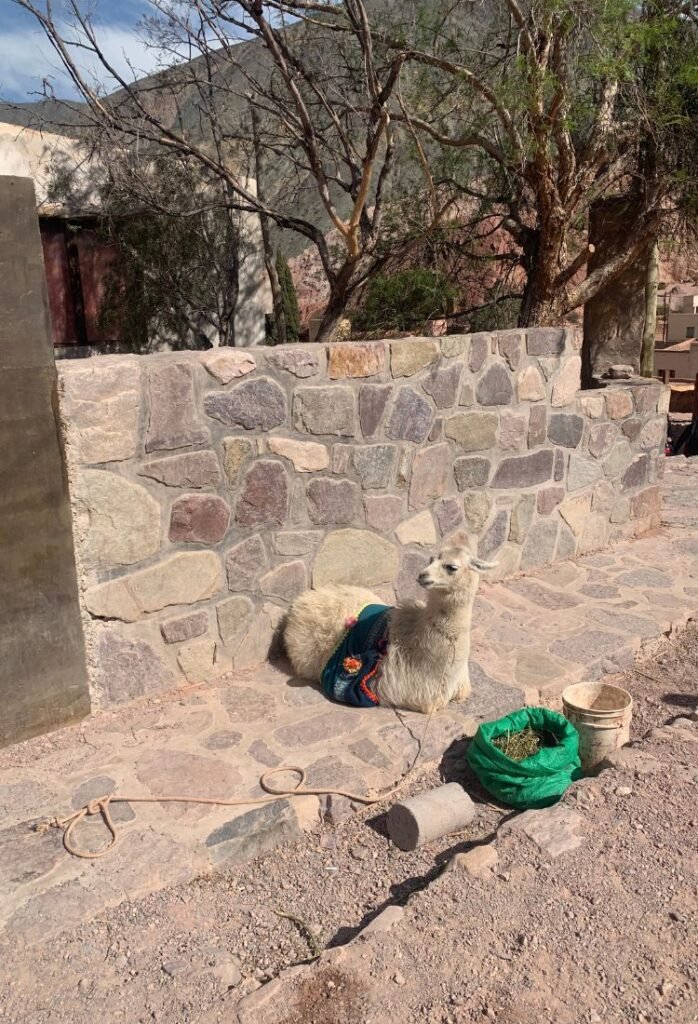
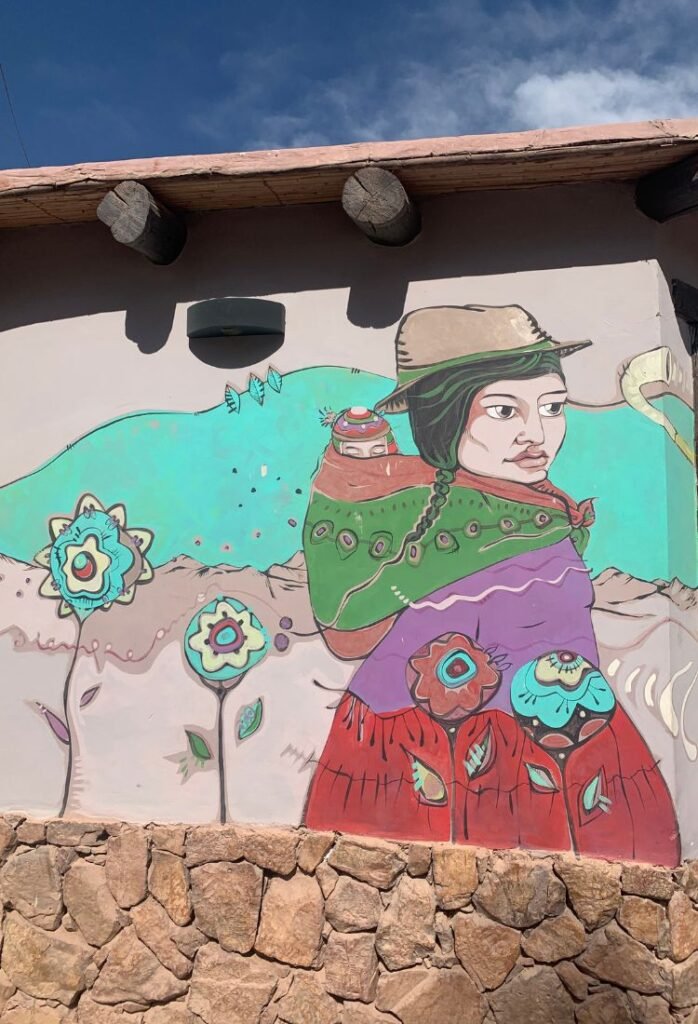
Among its many wonders, Jujuy boasts the iconic Quebrada de Humahuaca, a UNESCO World Heritage Site. This world-renowned arid mountain valley is a treasure trove of history, having served as a major trade route for over 10,000 years. It’s also home to picturesque towns like Purmamarca, Tilcara and Huamhuaca, each brimming with charm and Andean culture, surrounded by jaw-dropping scenery. We’ll dive deeper into these must-see destinations in the following sections.
For the above reasons, I recommend skipping the capital city (San Salvador de Jujuy) to dive straight into the province’s regions. But Jujuy isn’t just about its landscapes—it’s a haven for food lovers, too. You’ll savour regional delights like tamales, humitas, and tender llama meat as you soak up the area’s rich culinary traditions.
TIP: Bear in mind many of Jujuy’s attractions sit over 3,000 meters above sea level. You’ll find plenty of shops selling coca leaves, candies, and tea made from coca, a traditional solution to mitigate the effects of altitude.
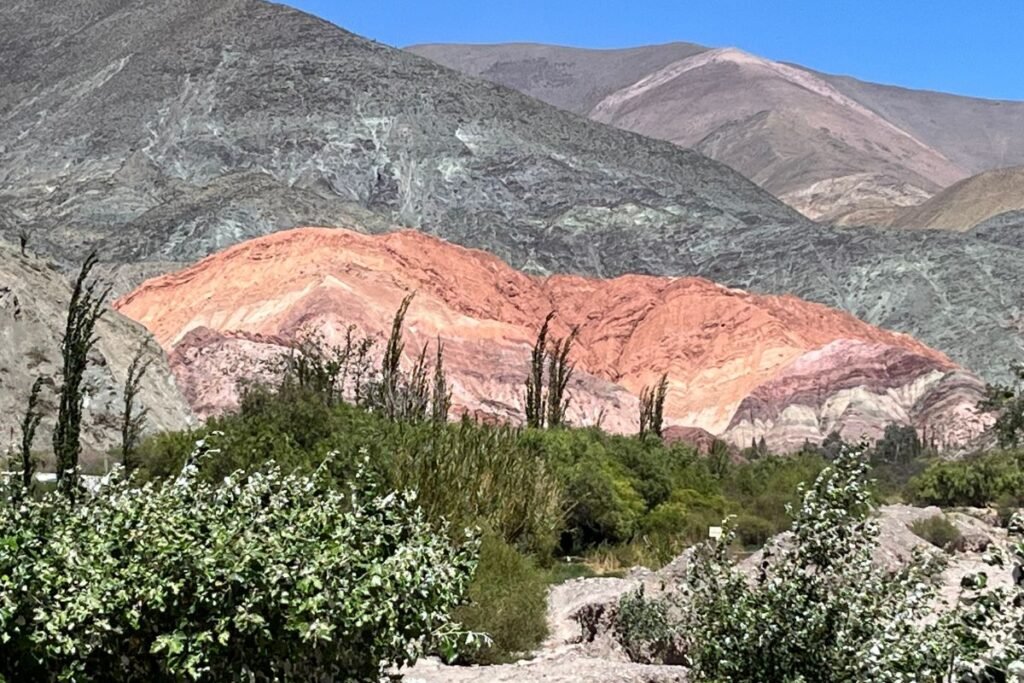
Purmamarca
Purmamarca, a picturesque village cradled in the heart of the Quebrada de Humahuaca, is a must-visit destination in Jujuy Province. Known for the breathtaking Cerro de los Siete Colores (Hill of Seven Colours), this charming town is likely to be the first stop on your Jujuy itinerary—and for good reason.
Its name, meaning “Town of the Virgin Land” in the Aymara language, perfectly captures its untouched beauty and deep cultural roots. Purmamarca is not just a place to pass through; it’s a spot to pause, recharge, and marvel at the striking landscapes that surround it. With its adobe houses, cobblestone streets, and timeless rustic charm, Purmamarca feels like stepping into a living postcard.
– Cerro de los Siete Colores (Hill of Seven Colours): This geological marvel is the heart of Purmamarca and one of the most iconic sights in Northwest Argentina. Known as one of the most photographed mountains in the country, its striking bands of red, orange, green, and violet are the result of millions of years of sedimentary deposits. For the best experience, visit the mirador (viewing platform) in the morning when the sunlight brings out the mountain’s vivid colours. Note: there is currently a small fee to access the mirador, typically less than $1 USD. Location here.
– Artisan Market in the Plaza: The bustling plaza market is the perfect spot to soak up local culture. Vendors sell a variety of handmade goods, including textiles, llama wool ponchos, Andean jewelry, and traditional ceramics. It’s also a great place to pick up souvenirs while supporting local artisans. While card payments are becoming more accepted, cash is still king.

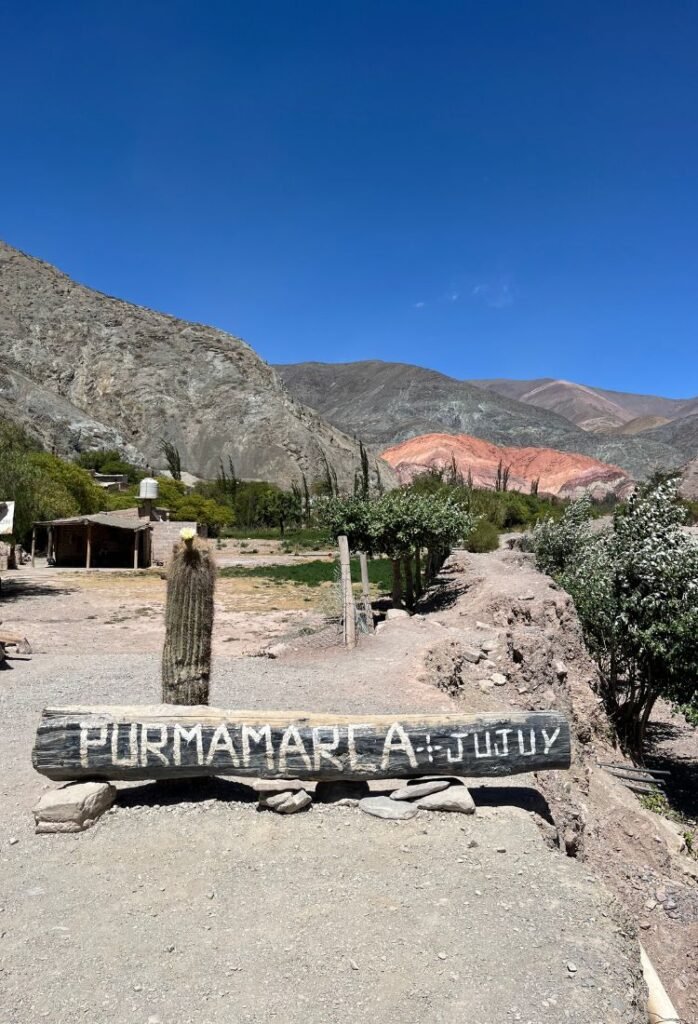
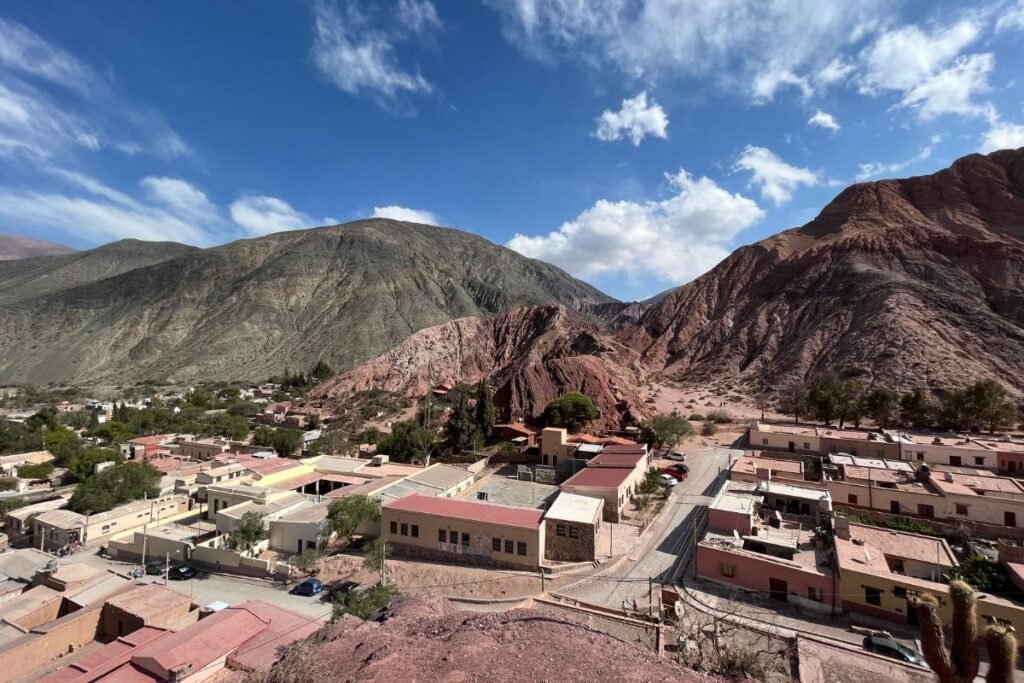
Salinas Grandes
Perched at an altitude of 3,450 metres, Salinas Grandes spans 212 square km of stunning white salt across the border of Jujuy and Salta provinces. While both provinces share this breathtaking natural wonder, the Jujuy side features easier access and whiter salt—perfect for snapping those creative perspective photos that the salt flats are famous for!
Getting there from Purmamarca is a scenic adventure. The journey takes just over an hour along the spectacular Cuesta de Lipán, a winding mountain road that climbs over 4,000 metres above sea level. Be sure to pause at the summit to capture a picture of the zigzagging road below.
If you are visiting the salt flats after a rain shower, you will experience a giant mirror, reflecting the sky in a surreal way, almost as if you’re walking on clouds. While smaller than Bolivia’s famed Uyuni salt flats, Salinas Grandes has its own unique charm, framed by the majestic Andes and offering an intimate yet equally captivating experience.
Here’s a fun tidbit: Some of the best empanadas I’ve ever had in Northwest Argentina were from a humble little food stall right at the entrance to the salt flats!
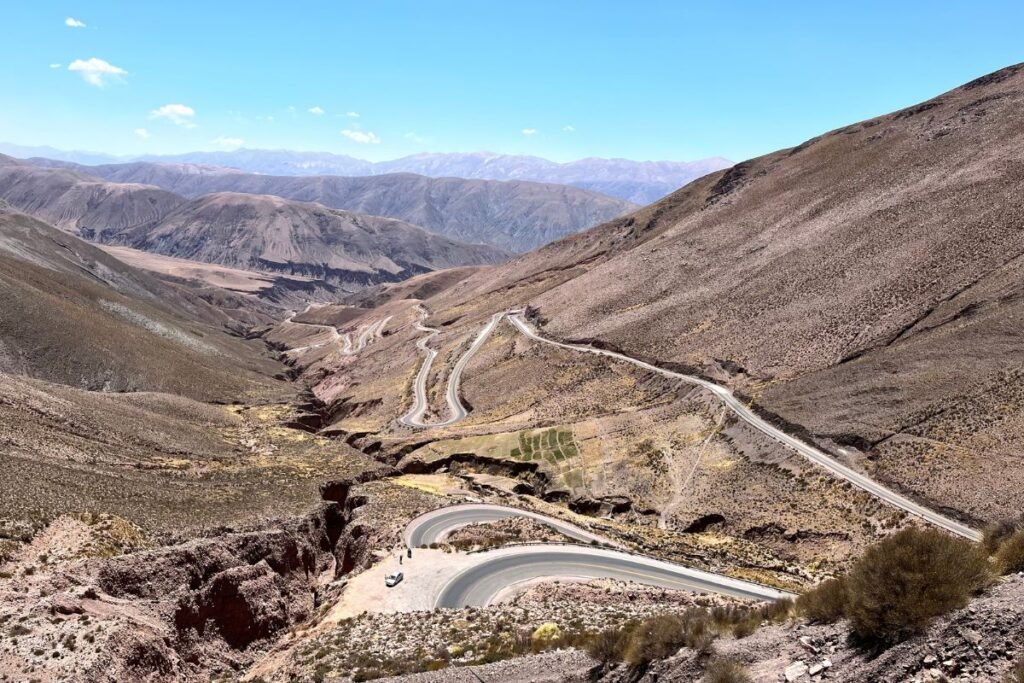
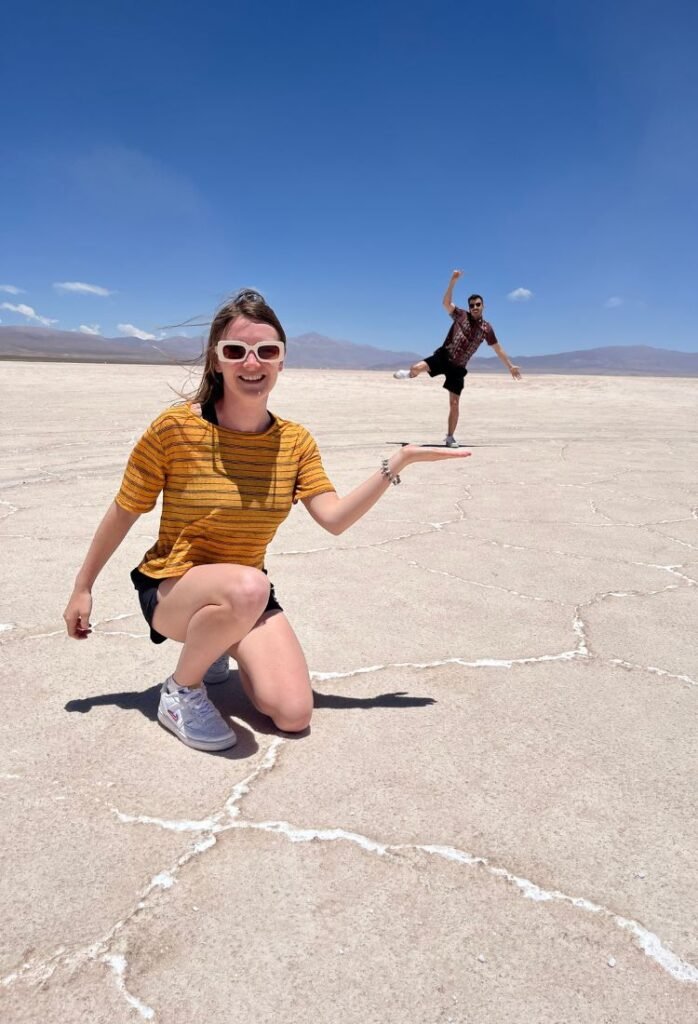
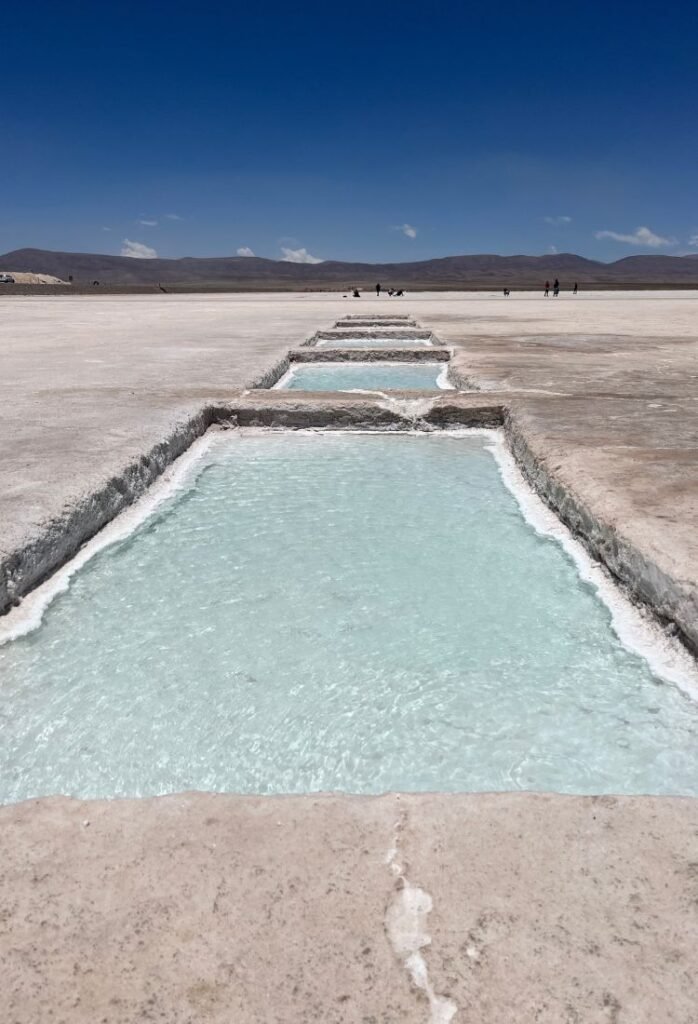
Unleash your creativity with perspective photography at Salinas Grandes!
Tilcara
Tilcara is a popular stop for travellers heading north into Bolivia or exploring Argentina’s northwest. Its proximity to the main attractions of the Quebrada de Humahuaca and a range of accommodation options make it an ideal overnight base. The town is compact and easy to explore on foot, offering a mix of charming family-run hostels and a few upmarket hotels to suit varying preferences.
One of Tilcara’s highlights is the Pucará de Tilcara, a pre-Inca fortress built by the Omaguaca people over 900 years ago. Set on top of a hill, it provides breathtaking views of the Quebrada de Humahuaca and offers an intriguing glimpse into the region’s ancient history.
For a taste of local culture, head to the colourful markets at Plaza Manuel Álvarez Prado and the Mercado Municipal de Tilcara. These vibrant spots are perfect for browsing fresh produce, sampling traditional foods, or picking up handmade crafts and souvenirs.
Outdoor enthusiasts shouldn’t miss the hike to La Garganta del Diablo (Devil’s Throat), a dramatic canyon with a small waterfall and sweeping desert views. The 4-kilometre trail (one way) begins at the old steel train bridge and features towering cacti along the way.
If you visit in January or February, don’t miss the Carnival of Tilcara. This vibrant festival blends indigenous traditions with Catholic influences, filling the town with colourful music, dance, and celebratory energy.
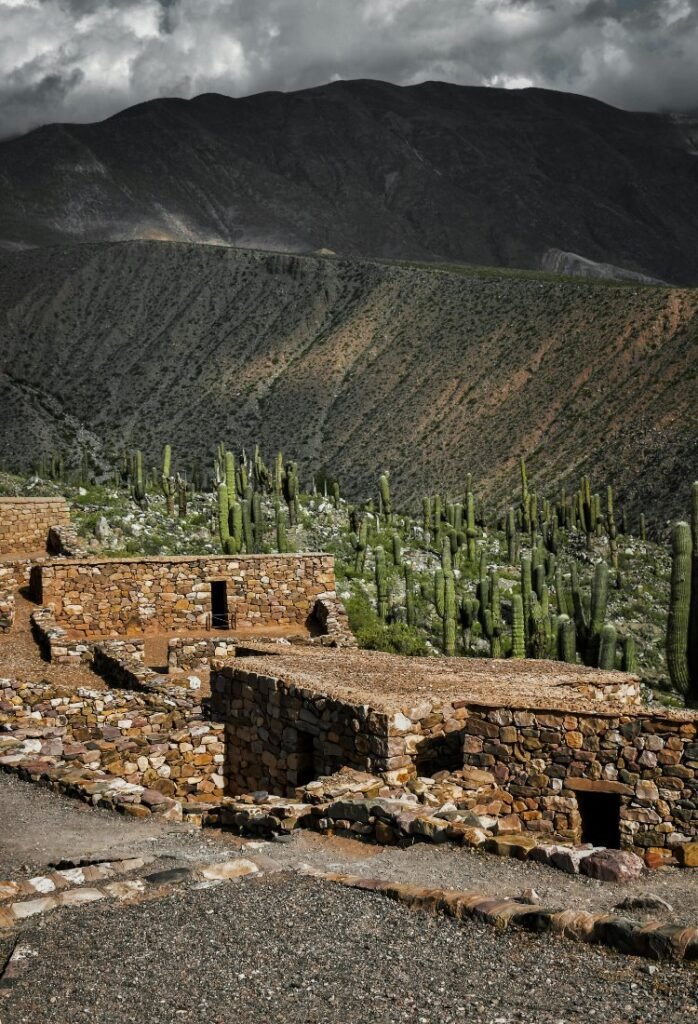
Pucara de Tilcara. Photo by Photo by Lucas Suárez via Pexels.
Humahuaca
Humahuaca, located in the heart of the mighty Quebrada de Humahuaca, is a charming town that feels like a step back in time. With its pre-Hispanic and colonial architecture, bustling markets, and jaw-dropping desert landscapes, it’s a must-stop spot in northern Argentina. As the largest town between Jujuy’s capital and the Bolivian border (just under two hours away), it’s a popular waypoint for travellers heading to or from La Quiaca.
The town itself is a delight to explore, with its narrow cobbled streets, low adobe houses, and laid-back vibe. Humahuaca has everything you need for a comfortable visit, from cosy hostels and restaurants to folkloric clubs, craft fairs, and even a hospital. Take a stroll through town, and you’ll find surprises around every corner, from quaint cafes to beautifully preserved historic buildings.
At the centre of it all is the Independence Monument, in the main square. This impressive statue is a nod to the town’s role in Argentina’s fight for independence, giving the area a sense of historical significance that complements its timeless charm.
Of course, you can’t miss El Hornocal, the legendary 14-Colour Mountain located just 25 km outside Humahuaca. The most common way to visit is by joining a tour, and as soon as you arrive at the bus terminal, you’ll find plenty of locals tour operators offering this service. A scenic 40-minute drive brings you to this kaleidoscopic marvel, where the dramatic slopes rise to an altitude of 4,300 metres, offering breathtaking views from the designated viewing platform.
Back in town, the vibrant markets are a treasure trove of handmade tapestries, pottery, and carvings crafted from quebracho wood and dried cactus. It’s the perfect place to score a unique souvenir and get a taste of the region’s rich culture.
Serrania del Hornocal, also known as the Mountain of 14 Colours. Photo by Esther Simmendinger via Pexels.
FAQ
How to Get to Northwest Argentina and Around
How to Get There
Fly into Martín Miguel de Güemes International Airport in Salta, the gateway to Argentina’s Northwest. Domestic flights from Buenos Aires, Córdoba, and Mendoza are frequent and convenient. While buses are still somewhat a popular option, mainly among locals, nowadays there are more affordable flight connections, so the bus option is really not worth the long 22-hour journey from Buenos Aires.
Transport Options
Getting around northwest Argentina typically comes down to two main choices:
- Rent a car: Renting a car is the best option if you want the freedom to explore at your own pace
- Join a tour: For a more convenient option, plenty of tours operate from Salta City, which serves as a great base for day trips across Salta and Jujuy provinces.
Best Time to Visit Salta & Jujuy
Northwest Argentina is a year-round destination, but the dry season (May–October) is ideal for exploring. During this time, you’ll enjoy sunny skies, cooler temperatures, and fewer rain-related disruptions. Be prepared for chilly nights, especially in higher altitudes.
What to Pack
- Layers: Temperatures can swing drastically, especially in the mountains.
- Comfortable shoes: Essential for exploring towns, hiking trails, and uneven terrain.
- Sunscreen and a hat: The sun can be intense, even in cooler months.
- Cash: Many small towns don’t accept cards. Sort this out in Buenos Aires if you can. For tips on how to make the most of your foreign currency in Argentina, see this guide.
FInal Thoughts
Salta & Jujuy are proof that Argentina isn’t just tango and steak. From rainbow-coloured mountains to ancient ruins, and from mouthwatering empanadas to salt flats that look like another planet, Northwest Argentina offers a little bit of everything and will not disappoint you.


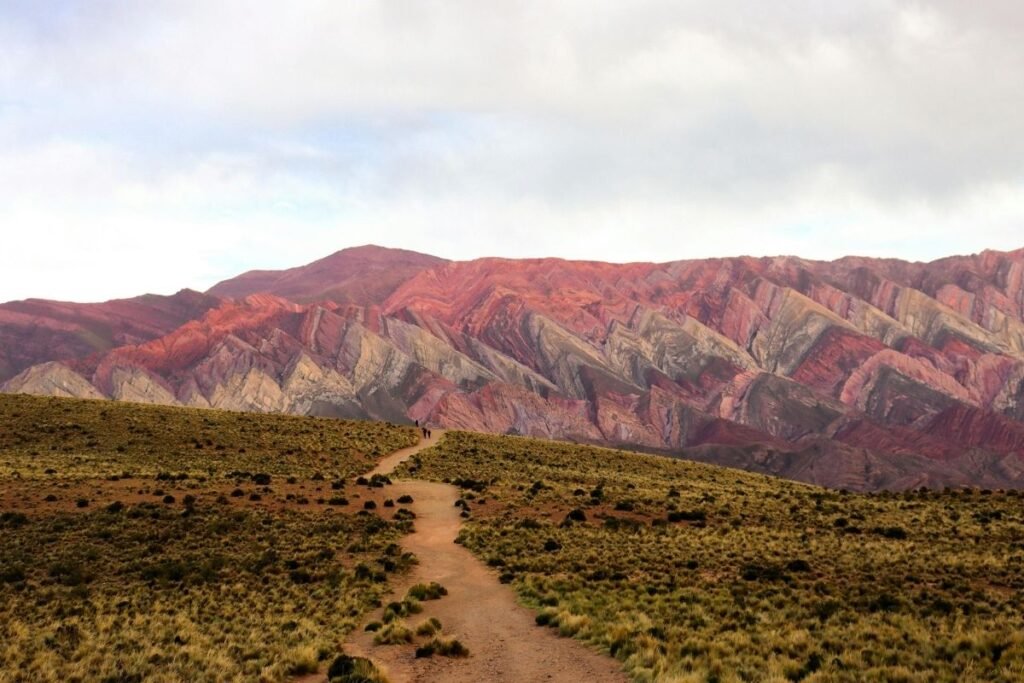
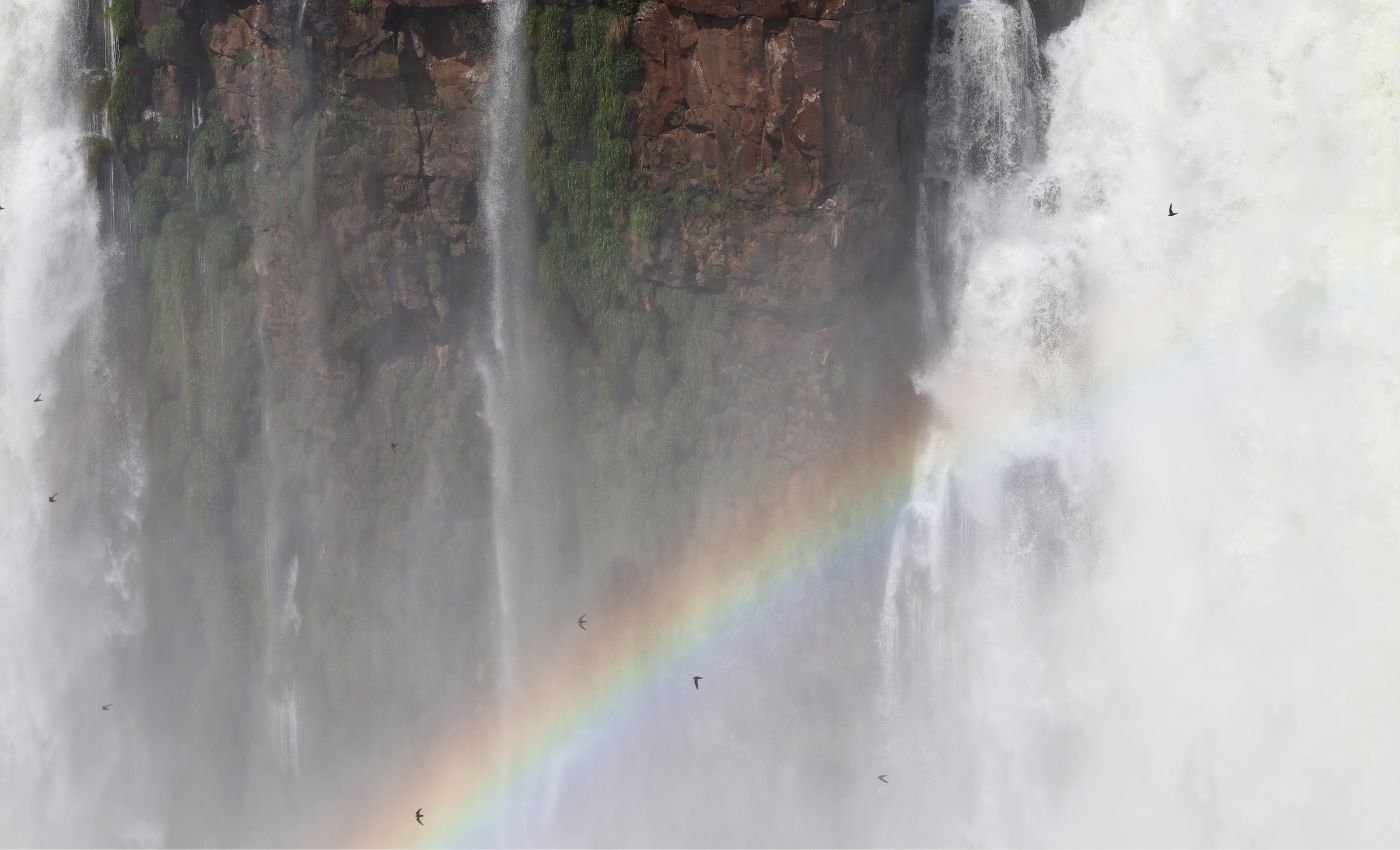
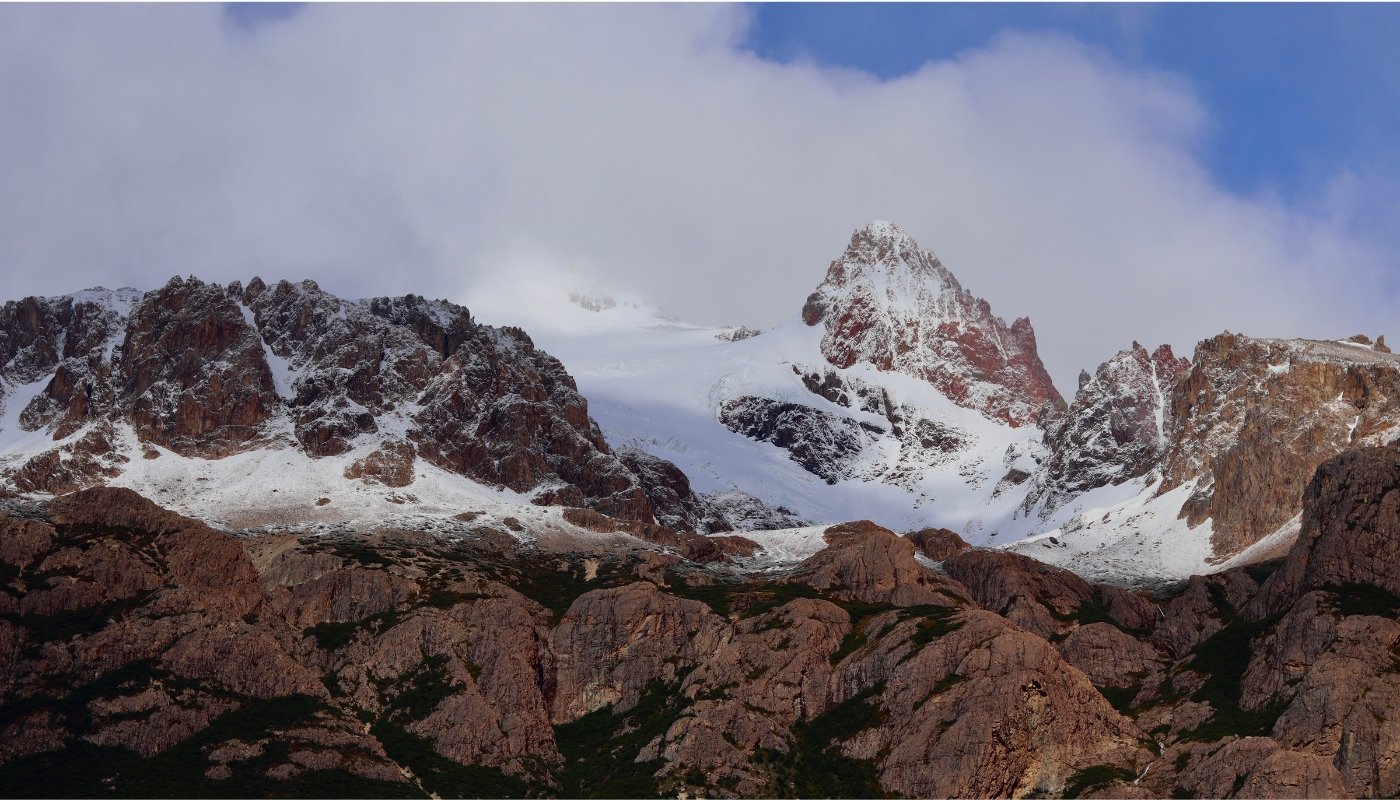
Leave a Reply